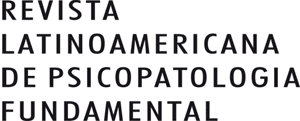To approach the question of psychopathological diagnosis in psychoanalysis of Lacanian orientation, the author first questions the existence of a psychoanalytical psychopathology, in fact, the existence of any specificity in psychoanalytic diagnosis.
He then goes into the notion of formal encasing of symptoms and of the subjective position as the central themes that orient diagnosis in Lacanian psychoanalysis.
The author holds that there are two clinical models in Lacan, and this fact requires two models of diagnosis, the structural clinical model and the Borromenean clinical model.
The structural clinical model is non-continuous and categorical, based on the modality of opposition and oriented in function of the opposition between the existence and non-existence of the father function. This type of clinical approach is tripartite, dealing with neurosis, psychosis and perversion.
The Borromenean clinic has the characteristic of making no reference to the nosological categories of classical psychiatry. It is based on the relationship among the registers of the Imaginary, the Symbolic and the Real, according to the properties of the topological figure of the Borromenean knot. It is a continuist rather than categorical clinic.
Diagnosis; psychopathology; structural clinic; Borromenean clinic
